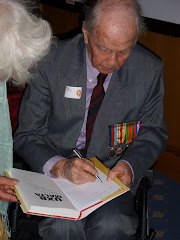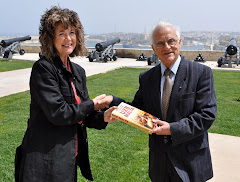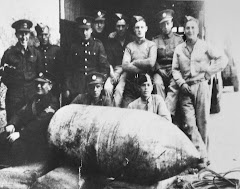Today I helped someone on a World War 2 forum seeking information on the deaths of five infantrymen in Malta in March 1942. I was glad to – because not so long ago that could have been me.
The path which led me to an original 1941 document and the key to a mystery (see blogs2 and 4 March 2010) - was not a smooth one. It had taken that age-old combination of determination and luck. What I learned on the way could help you have an easier journey.
First step in researching personal history is to collect as much information from the individual or family as possible. Record them speaking if you can: it was replaying the actual words of Lt Carroll that gave me the essential clue I’d missed. Apply for the Army Service Record (from the Army Personnel Centre). You’ll need proof of next of kin if the service person is not applying himself.
Lt G D Carroll’s record shows he served in the Bomb Disposal (BD) Section in Malta in 1941-2. Now I wanted documentary evidence of what he did. My first attempt at using the National Archive in 2005 was unsuccessful. I got no results from the catalogue when I searched for BD Sections in Malta. The abbreviations they use do vary and it can be hard to pick the right one (there is a list available online which helps).
I needed help. Through the RE Bomb Disposal Officers Club, I contacted specialist historians, only to be told that no documents survived: they’d been destroyed in a fire, or lost in storage. I was on the point of giving up when, over dinner one evening, two friends gave me advice: a civil servant working for the Army said, “If it involves the Army, and it doesn't make sense, try assuming it’s a cock-up”. The other, a World War 1 historian, said: “There had to be a War Diary; it was compulsory. You just have to find it – and it may not be filed [in the National Archive] where you expect it to be.”
With their tips in mind, I went back to the National Archive website. Setting aside all assumptions about what a document would be called, or where it would be filed, I started again from scratch. The Catalogue Research Guides are a helpful starting point: in this case, listed as British Army Campaign Records 1939-1945, Second World War. Here you’ll find the Catalogue Reference for documents including Headquarters Papers, Unit War Diaries, War Office Directorate papers and Orders of Battle.
Next you need to establish which ‘theatre of war’. This is when my historian’s friend’s words echoed in my head. Malta is in the ‘Central Med’, right? Or, as a tiny Island, it’s a Smaller Theatre’? Neither – and this is where a broader knowledge of the war comes in: Malta War Diaries come under the Middle East: Catalogue Reference WO 169. A click on the ‘Browse from Here’ button takes you to a list showing the years covered and the piece reference numbers (from WO 169/1 to 24939). Once you get an idea of what’s where, you can jump forward to a document from the right period and browse from there.
I was unlucky. None of the Bomb Disposal Section War Diaries were from Malta: another dead end. Perhaps the files were really lost. I didn’t want to give up, but if I was going to find them I’d have to do it the hard way, and leave no stone unturned. If the War Diaries weren’t under Bomb Disposal Sections, where were they? Then I heard in my head the words of Lt Carroll: “I was attached to the Fortress Engineers.” If I could find their War Diary, it might help. I went through the lists again, and found some possible file references.
Two days later, on 5 September 2006, a year after my first visit to Malta with Lt Carroll, I sat in the National Archives staring at his signature on the Bomb Disposal Report for the week ending 10 May 1941 – attached as an appendix to the weekly War Diary of the Fortress Engineers. I was on my way.
Subscribe to:
Post Comments (Atom)






No comments:
Post a Comment